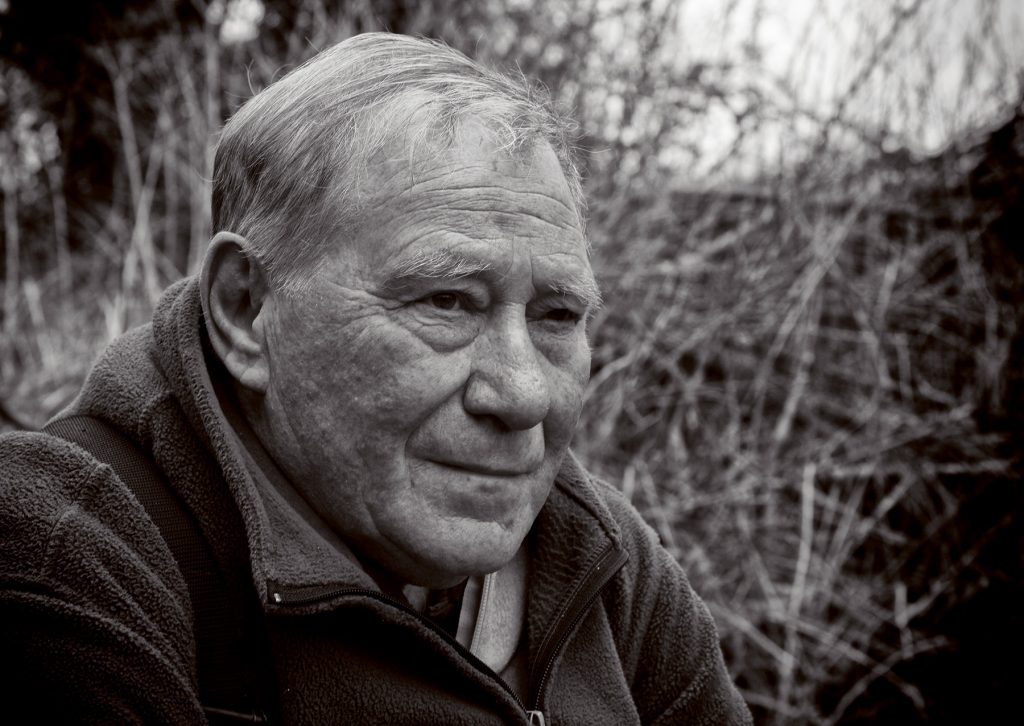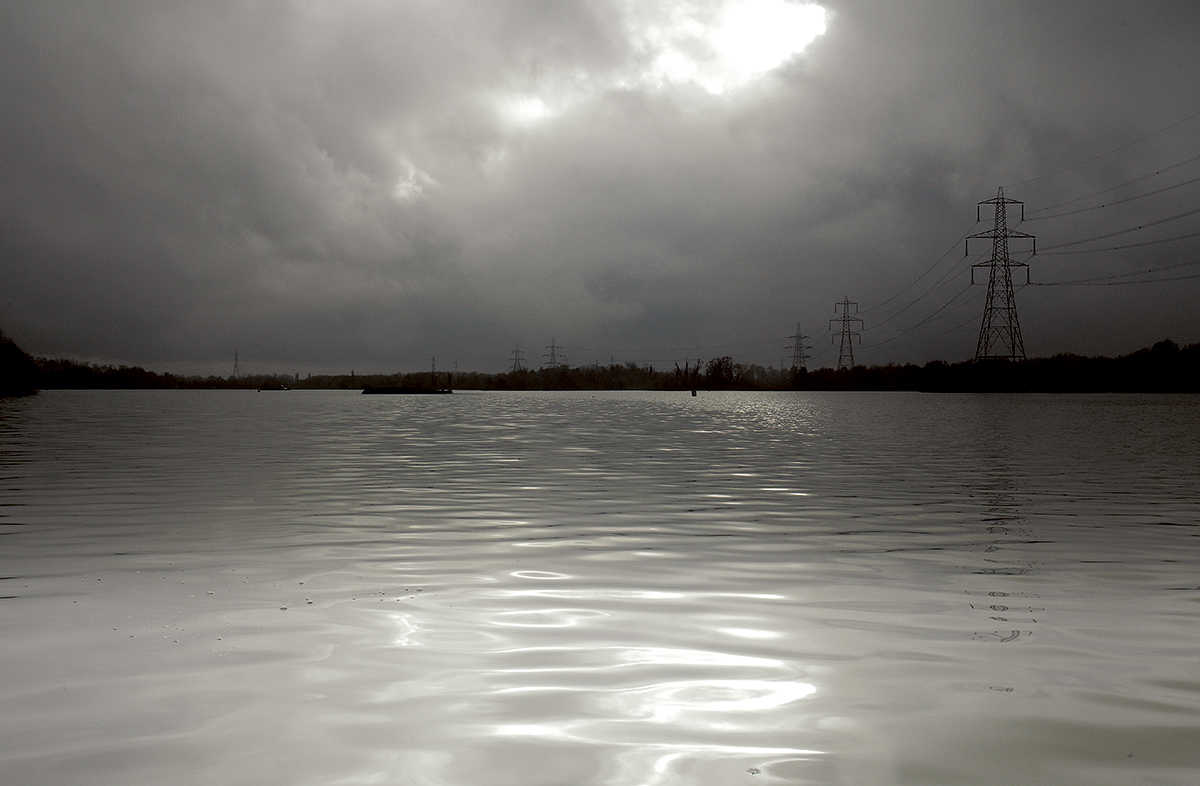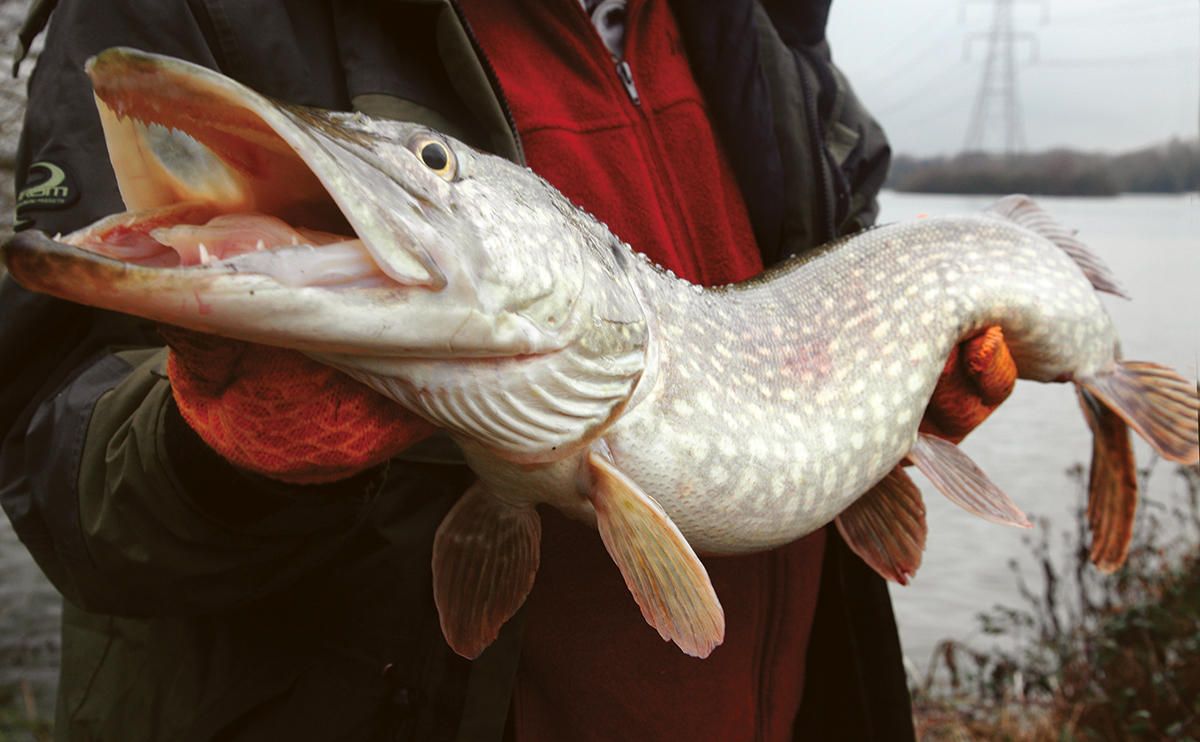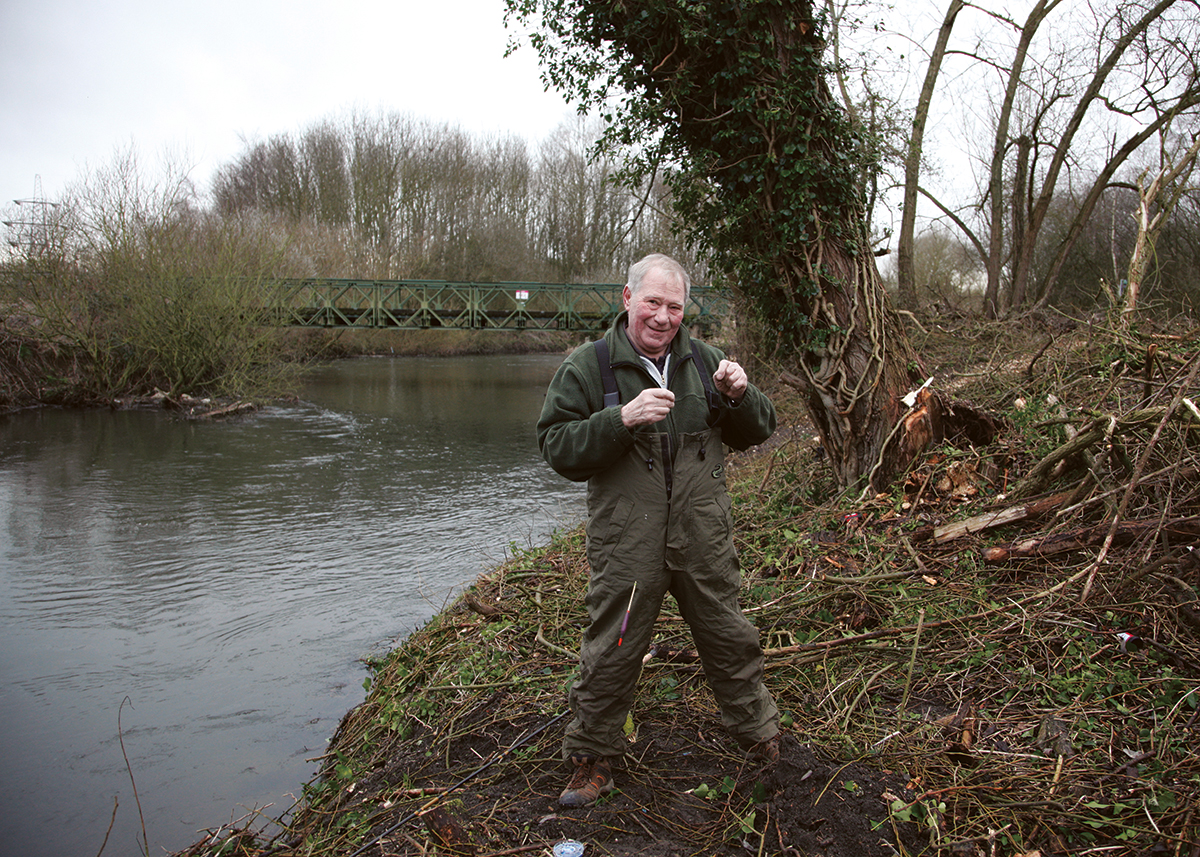
Garrett Fallon meets Bob Hornegold, chairman of the Osprey Specimen Group
A thick mist clings to Epping Forest, oozing from the ground like smoke from a burrow, badger bonfires blocking out the world. It obscures all, revealing light only at the very last moment: dodging cars on sharp bends, clenched teeth and arse cheeks desperately trying not to shit themselves. I drive at a crawl, foot hovering over the brake in case disaster strikes, waiting for some sad nocturnal life to meet its end under the wheels of my car. But nothing does. All is blind in this, so thick a ghost could not find its way. And ghostly it is. Spectres in a wind tunnel fly over and around the car, glimpsed faces in the swirl, memories that are not my own mix with the mist and try to slow me down.
I hit a roadblock just as I exit the claustrophobic trees, a diversion pointing me back into the dark. I missed the first sign in the strangling gloom. Eventually I find my way. I have secluded satnav coordinates, a specific code for a specific gate, a list of directions to keep me on the straight and narrow. Then finally I am there, a secret pit, a haven for pike, a monster’s lair. Dawn has yet to seep through, I cannot see the water, but the light breeze carries the scent of the pit with it. I can hear the squabbling birdlife and there is a bassline beat of a rushing sluice. Then I see the vast sheet, grey and unforgiving, a place that looks like it wants to keep its secrets.
Bob Hornegold appears from under a walking torch to say hello. We have known each other for several years, but this is the first that we have fished together. He is a stocky man, well built, a beaming smile puts me at ease. I knew that as a very young man he toyed with becoming a professional golfer, and I imagined how hard and far he’d twack a golf ball down a fairway. It wasn’t quite for him, so he enrolled as an apprentice greenkeeper in 1960, before becoming a head greenkeeper and building golf courses in the UK and abroad. I can sense that those meticulous organisational skills and ability to plan are very much still there. There’s a soft Essex lilt to his voice that takes me “daaaawn tha pab” for a pint in my mind.
“We couldn’t fish the river today,” he says. “Too much bloody rain. It’ll be the colour of oxtail soup. But we should catch here. A good head of pike, some up to 30lb.” If there’s one thing I’ve learned in my time as an angler, it’s to listen to those who know each water best. I made that mistake once on the river Shannon, and sat halfway up a hill while the river pushed broken canoes and dead sheep through the fields. In the case of the river Lea, there would be very few who would know it better. But we’re not quite on the river Lea. Our secret pit is just one of many in the Lea Valley, one of many linked to the river which help relieve suburbia of its flood water. While the river threatens to rise like boiling water over the edge of a pot, the pit absorbs the worst the tarmacadam world can spit at it and says nothing.

Bob is the chairman of the Osprey Specimen Group, which was formed in Autumn 2003 following the dissolution of the RMC Angling Specimen Group. They don’t chase just one species, but many. If you Google him, you will find a plethora of pictures of Bob holding enormous carp, barbel, pike, chub and perch, mostly from the Lea where he has fished since 1952. Originally from the East End, his parents moved to Chingford when he was a young lad, where the local Warren Pond drew boys to its banks like ants to a picnic, and a lifetime of angling began. Older age soon enabled young legs the freedom to explore and push boundaries, and the Lea came into view, and 60 years on, he still fishes the same river. 60 years, a lifetime together. But family circumstance has drawn him away to the coast, and it is difficult and far to travel back. I can see he clearly misses it. Perhaps the feeling is mutual, old friends longing for each other from afar.
It is a poignant reminder of the bond between angler and water, the synergy that can exist when an angler becomes intimate with a place where he or she loves to fish. I have been struggling somewhat with my own angling. I can’t quite put my finger on it, but I’m restless and edgy. It may have something to do with not having a local water, somewhere within easy grasp of my home in south east London. I have flirted with the Wandle, and that may yet bear fruit, but the drive across the arse of the city is a soulless grind that saps your spirit so that by the time I get to the river I practically want to chuck myself in.
My nearby river Ravensbourne shows promise, but the locals maintain it is not for angling, despite what my own research has shown.
So perhaps the Lea might be something worth pursuing, though oddly, I need to drive under the Thames to do so. It rises from the Chilterns in deepest Bedfordshire then flows as the Luton Lea before entering Hertfordshire on its journey through Essex and into London—as the Upper Lea, Middle Lea, Lower Lea and London Lea—where it eventually meets the Thames, somewhere near the tunnel I drive through to reach it. In its early stages, it rambles and meanders freely through fields and flood meadows before man grabs it and shapes it to his own will. It is the river of Izaak Walton, rush-lined and streamy, where trout sip at flies and sunsets throw a romantic glow over the landscape and make men weep. It is the river that London can’t leave alone and does its best to distract it on its journey to the sea. Its vital statistics have been preened and altered—a nip here, a tuck there, a lift and a push somewhere else. By the time it flows past the Olympic park it is (of course) unrecognisable from the river of its youth. But under the surface it is the same.
But the Lea is not just a river anymore. It is a system. The old river, the Lea navigation, the Relief Channel, and a host of pits and pools dug to build roads and feed the city—a patchwork quilt, a maze of water, all of these form part of a convoluted identity—urban yet rural, wild yet tamed, well known yet forgotten. Despite being on the doorstep on millions, it is shrouded in mystery, and this is what has kept Bob fishing it for 65 years.
Our day on the pit is dull and grey, sporadic showers doing their best to dampen the mood and pursue anglers under umbrellas. There is a sluice to our right, where muddy water from the downpour is rushing colour into the pit, the system doing what it is designed for. You can see the new water mixing with the old, ink dropped into a glass of water, milk mixing in a cup of coffee.
“I saw a huge catfish in that sluice one summer,” he says. “It was seven foot long. The thing must have weighed about 100lb,” he adds. “That’s the thing with the Lea. You just never know what you’re going to get. It’s full of surprises.”
Despite the huge area in front of us, we fish close to the margins, sprats popped up from the bottom to beat the crayfish, and the runs come throughout the day. Bob’s mobility isn’t quite as great as it was when Jimmy Bloomfield, the manager of Leyton Orient football club, signed him on amateur papers and gave him the job of head groundsman, nor will it see him thunder down the wicket again, like he did in the nets at Lord’s while working as assistant groundsman. “I used to bowl to all the stars of the day while they waited for the declaration,” he added. However, the competitive nature is very much still there, and while I’m wondering how important that is to the angler who targets big fish, he still manages four pike to 14lb. He is meticulous in his preparation and presentation, and as I listen to him I try to absorb just a few of the many tips and tricks he has amassed over the years. I am a schoolboy to the master, Skywalker to Yoda. The catfish stays away, the other monsters too, but my eyes were opened.

The lone angler is perched on a seat, high above a plunging pool, face slightly puzzled—one arm on his knee, the other on his rod—waiting for the tip to spring into life. For the most part it is a picture of concentration, the cogs whirring behind the ears as the swim is dissected in his mind… where to cast, where to bait, what might be here? Occasionally the broad smile takes over and the man and the river are in agreement.
Carthagena Fishery is a private syndicate that is on the river itself, with another pit behind. The old river thunders over the weir and into a deep, dark pool, the resultant foam carried by the current like the disintegrating head of a giant pint of the black stuff. The pool—flanked by overhanging trees and swims on one side and barges on the other—holds big bream, chub, barbel, perch, carp and pike, and rumours of double-figure zander are disguised behind coughs. As oxygen and water flood into the pool no two seconds are the same. I fish for big perch, Bob having caught one of 4lb 6oz several months earlier, but the smaller pike have massed—possibly for the spawning season a few weeks away—and the bite alarms of Bob’s rods call out regularly. While the pit held a definite sense of the unknown, it somehow felt like we were playing football on the street outside Wembley while the cup final was going on inside. The river was within touching distance but the weather kept us away. I was very pleased to finally be fishing it, but now that I was, she was showing herself to be moody by spurning my initial advances.
I have often pondered the idea of specimen hunting. Bob prefers to call it pleasure angling, because it is to him—“Why on earth would you do it otherwise?” he asks—and though its long hours and (some argue) tedious dedication are anathema to some, to those who practice it, it is just as rewarding as other ways to cast a line. In my younger days I hunted specimens, camping on a lake for days, but I didn’t really have the patience for it, and middle age hasn’t yet added that to my armoury, not that it should. Yet there is, admittedly, something about it that I miss. I think it requires a certain type of person, somebody with more backbone than me perhaps, somebody with time on their hands and faith in their beliefs. Bob has often spent weeks on a water only to catch nothing, but of course it’s never simply nothing. Each session adds something, whether it’s experience, an upward swing on a learning curve, or simply time spent on the bank. Because time spent on the bank is lodging money in the bank… sooner or later a withdrawal will be made. You must believe this. You have to put the time in. Perhaps the river won’t give up its prize to those who haven’t worked hard for it, such as me. The extreme patience, the boredom, the graft, the solitary confinement, eventually it might all be worth it.
I am told that this part of the Lea lends itself to specimen hunting because it contains so much water that is understocked. Many blame heavy predation from cormorants that may keep the smaller fish at bay. Others blame poaching. There certainly used to be more fish, but a pollution incident in 2005 killed a reputed 90% of the fish here. The biomass was severely depleted, but the fish that survived grew to legendary proportions.Bob saw this at first hand, maintaining his regular visits to the river throughout his life, even before he worked for Lee Valley Regional Park, where he reached the position of parks supervisor, responsible for the men who maintained its 26 mile length. “I used to keep a rod in the van, just in case,” he joked. It provided an excellent opportunity to study it further, and cement the bond. Bob and his friend Simon King (now sadly passed away) enjoyed a run of chub in one season that started in the sevens before topping at an incredible 9lb 1oz. And the current chub record of 9lb 5oz by Andy Maker in a southern stillwater was equalled by a Lea fish caught by Neil Stephens in 2012. Local angler Den Poole caught a 17lb barbel in the Old River in late 2016, and at least four 4lb perch have emerged in recent months. Then there are the big carp that have escaped local pits, and the monster catfish… angling pressure is low, fish density is low, the volume of water is high. These are perfect conditions for big fish to thrive. But Christ it’s not easy. But then again, it’s not supposed to be.

Bob’s friend and fellow specimen hunter Den POOLE paid us a visit at Carthagena. We were treated to a few photographs of enormous fish, including the huge barbel he caught a few months back. It was bigger than a dog with a tail that could paddle a canoe. But central to his story was the hard graft involved. I sensed a justifiable element of pride in the pain. He recounted what Simon King had once said to him when he first met him on the Lea, after a fruitless few days: “I know you might want to catch a chub as well as a barbel, but try and focus on just one species.” As much as it might seem odd to not fish for the barbel when they’re around, by concentrating on just the chub, it produced results. He has followed that rule since.
The Lea at Carthagena was thundering through the weir. Bream were topping in our swim but I focused on the perch that I so wanted to catch. Perhaps the bream knew I was practicing my newfound mantra, so were free to shove two fingers in my face and taunt me with their abandon. But I wasn’t to be swayed. Black stripes filled my thoughts, spiny dorsals appeared in the clouds. I was absorbed in watching the rod tip nod in the current but it refused to pull around. The sun was bright that day, which made a refreshing change from the dull and wet day on the pit, but all we knew it would put the perch down. But I didn’t want to admit it. I stuck to my guns, and remained resolutely fishless. Nick our photographer had no such qualms, and cast a maggot-filled feeder into my swim and quickly caught a beautiful brown, slimy 4lb bream.
Meanwhile Bob expertly fished two rods with bite alarms and landed six pike to 8lb. The pike seemed to have congregated right under his rod tip. We joked that sooner or later the mother of all pike would grab the bait, but it never did. I realised then that I had remained so focused on my quarry that I had not fished the conditions, and felt as confused about my fishing as I was at the start. Specimen hunting might well catch big fish, but the Lea knew that I was an imposter, and there was no way she was obliging too soon. Smart girl. This way I’m sure to come back.
I watched Bob land another fish and am tickled as the broad smile creeps across his face. A cheeky laugh fills the air that I imagine sounds very much like it did some 60 years ago. It does not matter how much time has passed since he first cast a line here, because each time he does, time itself ceases to matter. That’s what invariably happens when two old friends meet for the first time in a long time.
Photography by Nick Fallowfield-Cooper. With thanks to Carthagena Fishery and Daryl from the secret pit
First published in Fallon’s Angler issue 9, in June 2017. Republished today in memory of Bob Hornegold, a good friend and a fine fisherman.
